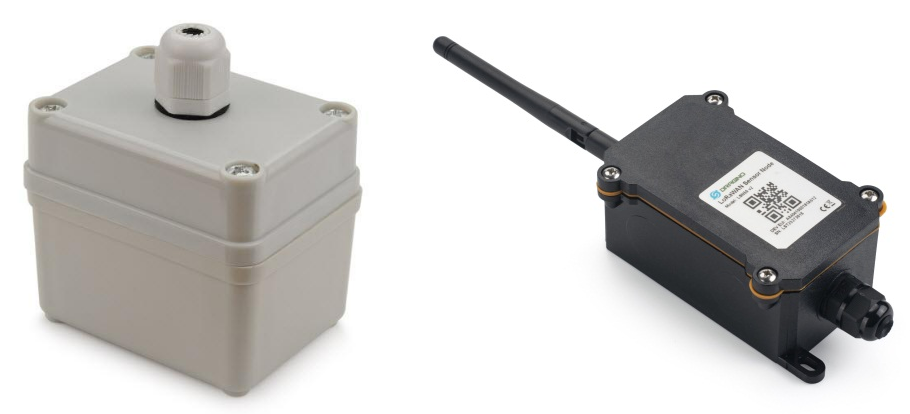
Table of Contents:
1. Introduction
1.1 What is LSN50 LoRa Sensor Node
LSN50 is a Long Range LoRaWAN Sensor Node. It is designed for outdoor data logging and powered by Li/SOCl2 battery for long term use and secure data transmission. It is designed to facilitate developers to quickly deploy industrial level LoRa and IoT solutions. It helps users to turn the idea into a practical application and make the Internet of Things a reality. It is easy to program, create and connect your things everywhere.
It is based on SX1276/SX1278 allows the user to send data and reach extremely long ranges at low data-rates. It provides ultra-long range spread spectrum communication and high interference immunity whilst minimizing current consumption. It targets professional wireless sensor network applications such as irrigation systems, smart metering, smart cities, smartphone detection, building automation, and so on.
LSN50 uses STM32l0x chip from ST, STML0x is the ultra-low-power STM32L072xx microcontrollers incorporate the connectivity power of the universal serial bus (USB 2.0 crystal-less) with the high-performance ARM® Cortex®-M0+ 32-bit RISC core operating at a 32 MHz frequency, a memory protection unit (MPU), high-speed embedded memories (192 Kbytes of Flash program memory, 6 Kbytes of data EEPROM and 20 Kbytes of RAM) plus an extensive range of enhanced I/Os and peripherals.
LSN50 is an open source product, it is based on the STM32Cube HAL drivers and lots of libraries can be found in ST site for rapid development.

1.2 Specifications
Micro Controller:
- STM32L072CZT6 MCU
- MCU: STM32L072CZT6
- Flash: 192KB
- RAM: 20KB
- EEPROM: 6KB
- Clock Speed: 32Mhz
Common DC Characteristics:
- Supply Voltage: 2.1v ~ 3.6v
- Operating Temperature: -40 ~ 85°C
- I/O pins: Refer to STM32L072 datasheet
LoRa Spec:
- Frequency Range,
- Band 1 (HF): 862 ~ 1020 Mhz
or
- Band 2 (LF): 410 ~ 528 Mhz
- 168 dB maximum link budget.
- +20 dBm - 100 mW constant RF output vs.
- +14 dBm high efficiency PA.
- Programmable bit rate up to 300 kbps.
- High sensitivity: down to -148 dBm.
- Bullet-proof front end: IIP3 = -12.5 dBm.
- Excellent blocking immunity.
- Low RX current of 10.3 mA, 200 nA register retention.
- Fully integrated synthesizer with a resolution of 61 Hz .
- FSK, GFSK, MSK, GMSK, LoRaTM and OOK modulation.
- Built-in bit synchronizer for clock recovery.
- Preamble detection.
- 127 dB Dynamic Range RSSI.
- Automatic RF Sense and CAD with ultra-fast AFC.
- Packet engine up to 256 bytes with CRC.
- LoRaWAN 1.0.2 Specification
Battery:
- Li/SOCI2 un-chargeable battery
- Capacity: 4000mAh
- Self Discharge: <1% / Year @ 25°C
- Max continuously current: 130mA
- Max boost current: 2A, 1 second
Power Consumption
- STOP Mode: 2.7uA @ 3.3v
- LoRa Transmit Mode: 125mA @ 20dBm 44mA @ 14dBm
1.3 Features
- LoRaWAN 1.0.3 Class A, Class C
- STM32L072CZT6 MCU
- SX1276/78 Wireless Chip
- Pre-load bootloader on USART1/USART2
- MDK-ARM Version 5.24a IDE
- I2C, LPUSART1, USB, SPI2
- 3x12bit ADC, 1x12bit DAC
- 20xDigital I/Os
- LoRa™ Modem
- Preamble detection
- Baud rate configurable
- CN470/EU433/KR920/US915/IN865
- EU868/AS923/AU915
- Open-source hardware / software
- Available Band:433/868/915/920 Mhz
- IP66 Waterproof Enclosure
- Ultra-Low Power consumption
- AT Commands to change parameters
- 4000mAh or 8500mAh Battery for long term use。
1.4 Applications
- Smart Buildings & Home Automation
- Logistics and Supply Chain Management
- Smart Metering
- Smart Agriculture
- Smart Cities
- Smart Factory
1.5 Pin Definitions and Switch
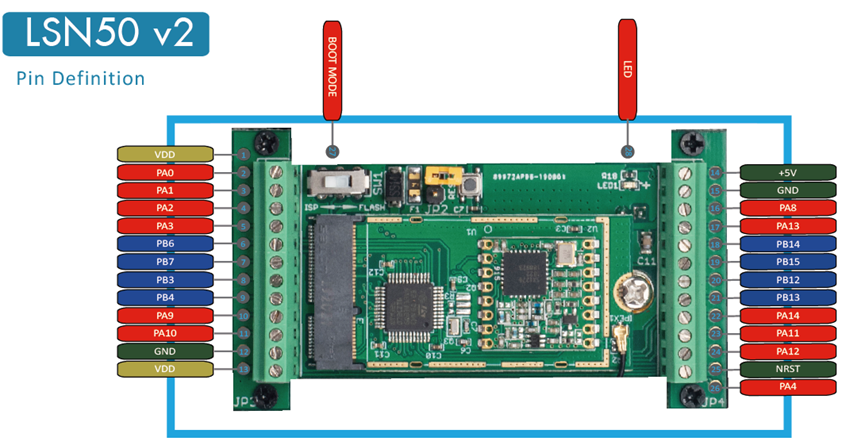
1.5.1 Pin Definition
The device is pre-configured to connect to SHT31 sensor. The other pins are not used. If user want to know more about other pins, please refer the user manual of LSn50v2 at: http://www.dragino.com/downloads/index.php?dir=LSN50-LoRaST/
1.5.2 Jumper JP2
Power on Device when put this jumper.
1.5.3 BOOT MODE / SW1
1. ISP: upgrade mode, device won't have any signal in this mode. but ready for upgrade firmware. LED won't work. Firmware won't run.
2. Flash: work mode, device starts to work and send out console output for further debug
1.5.4 Reset Button
Press to reboot the device.
1.5.5 LED
It will flash:
- When boot the device in flash mode
- Send an uplink packet
1.5.6 Probe Dimension
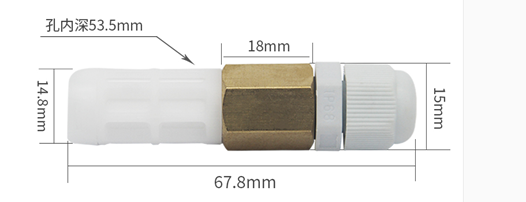
1.6 Hardware Variant
| Model | Photo | Description |
|---|---|---|
| LSN50v2-S31 | 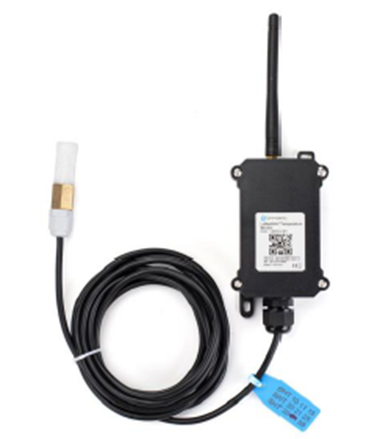 | External 3 meters SHT31 probe |
| LSN50v2 -S31B | 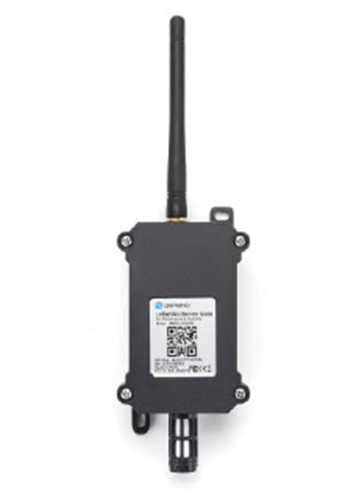 | On device SHT31 Probe |
2. How to use LSN50v2-S31?
2.1 How it works
The LSN50v2-S31 is working as LoRaWAN OTAA Class A end node. Each LSN50v2-S31 is shipped with a worldwide unique set of OTAA and ABP keys. User needs to input the OTAA or ABP keys in the LoRaWAN network server to register. Open the enclosure and power on the LSN50v2-S31, it will join the LoRaWAN network and start to transmit data. The default period for each uplink is 20 minutes.
2.2 Quick guide to connect to LoRaWAN server (OTAA)
Here is an example for how to join the TTN LoRaWAN Server. Below is the network structure, in this demo we use DLOS8 as LoRaWAN gateway.

The DLOS8 is already set to connect to TTN . What the rest we need to is register the LSN50V2-S31 to TTN:
Step 1: Create a device in TTN with the OTAA keys from LSN50V2-S31.
Each LSN50V2-S31 is shipped with a sticker with the default device EUI as below:
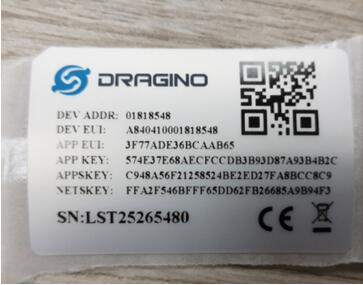
You can enter this key in the LoRaWAN Server portal. Below is TTN screen shot:
Register the device:
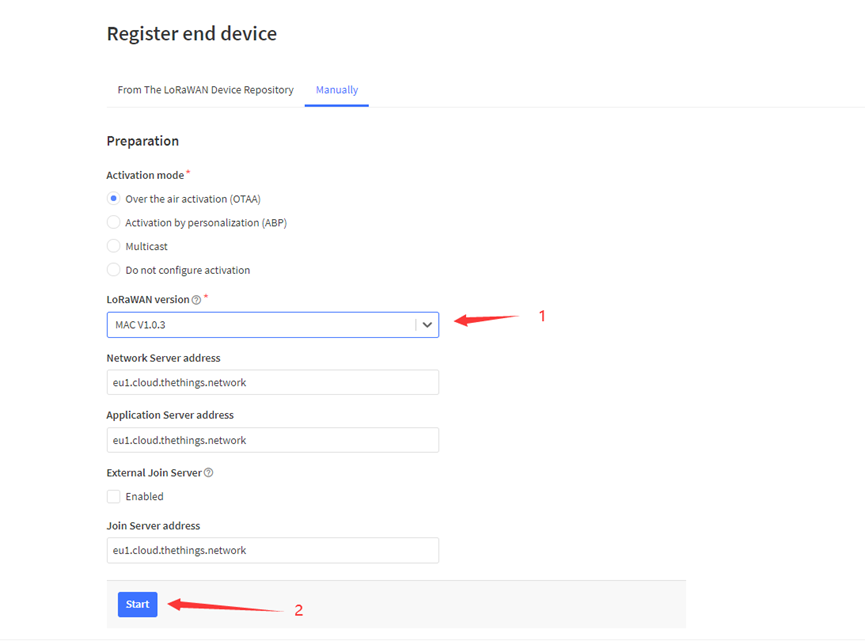
Add APP EUI and DEV EUI:
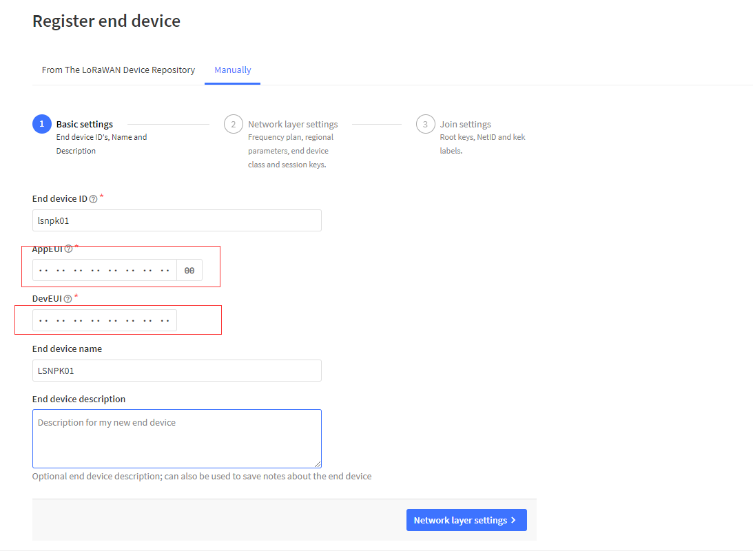
Add APP EUI in the application:
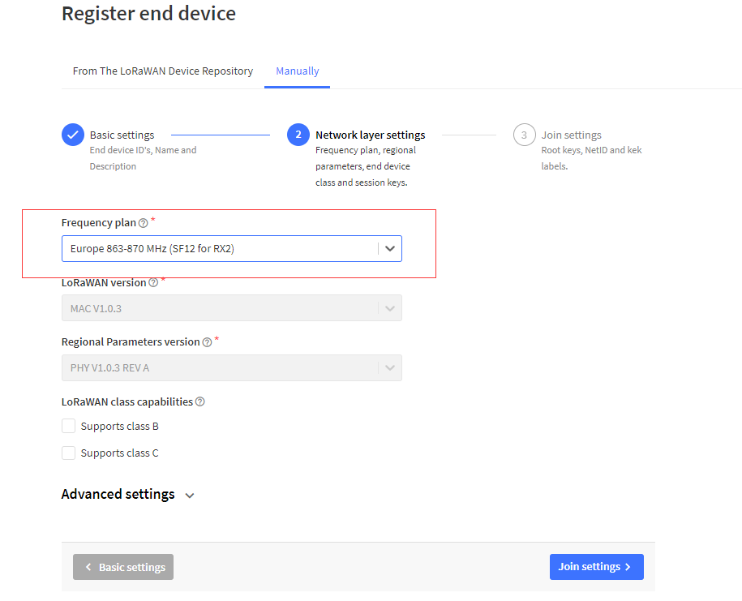
Add APP KEY
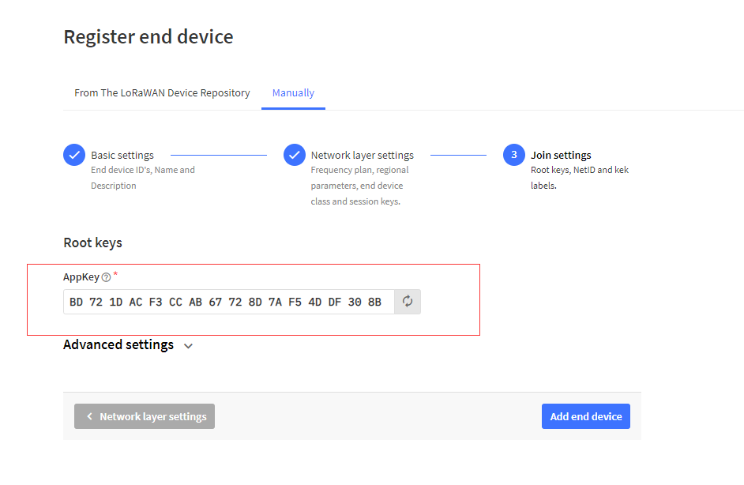
Step 2: Power on LSN50v2-S31
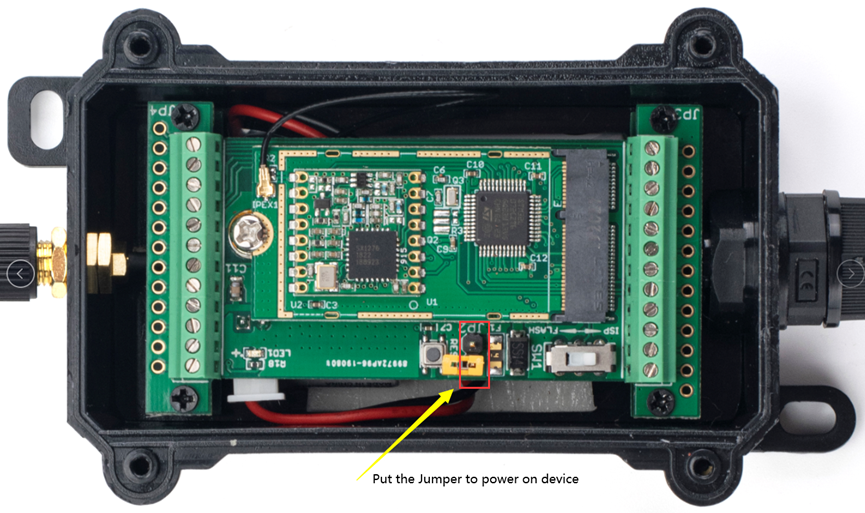
Step 3: LSN50V2-S31 will auto join to TTN network via the LoRaWAN coverage by DLOS8. After join success, LSN50V2-S31 will start to uplink temperature value to server.
2.3 Uplink Payload
2.3.1 Payload Analyze
Normal Upload Payload:
LSN50v2-S31 use the same payload as LSn50v2 mod1, as below.
Size (bytes) | 2 | 4 | 1 | 2 | 2 |
|---|---|---|---|---|---|
| Value | ignore |
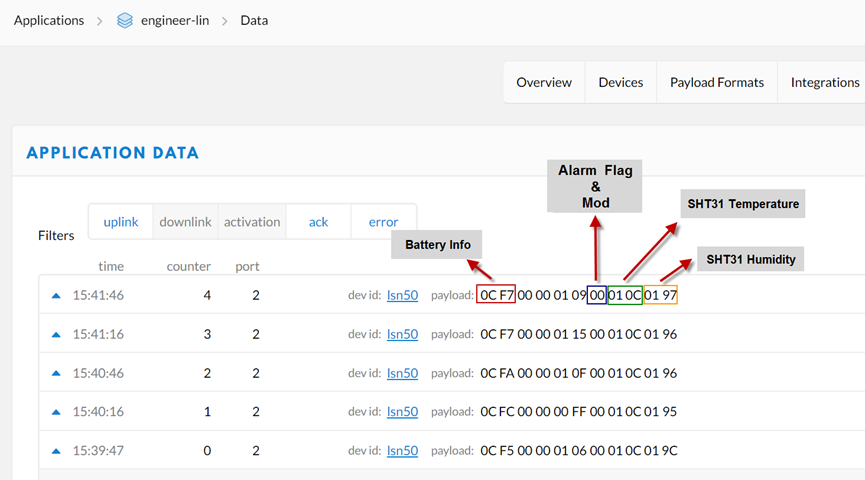
Battery:
Check the battery voltage.
Ex1: 0x0B45 = 2885mV
Ex2: 0x0B49 = 2889mV
Temperature:
Example:
If payload is: 0105H: (0105 & FC00 == 0), temp = 0105H /10 = 26.1 degree
If payload is: FF3FH : (FF3F & FC00 == 1) , temp = (FF3FH - 65536)/10 = -19.3 degrees.
Humidity:
Read:0x(0197)=412 Value: 412 / 10=41.2, So 41.2%
Alarm Flag& MOD:
Example:
If payload & 0x01 = 0x01 --> This is an Alarm Message
If payload & 0x01 = 0x00 --> This is a normal uplink message, no alarm
If payload >> 2 = 0x00 --> means MOD=1, This is a sampling uplink message
If payload >> 2 = 0x31 --> means MOD=31, this message is a reply message for polling, this message contains the alarm settings. see this link for detail.
2.3.2 Payload Decoder file
In TTN, use can add a custom payload so it shows friendly.
In the page Applications --> Payload Formats --> Custom --> decoder to add the decoder from:
2.4 Temperature & Humidity Alarm Feature
LSN50V2-S31 work flow with Alarm feature.
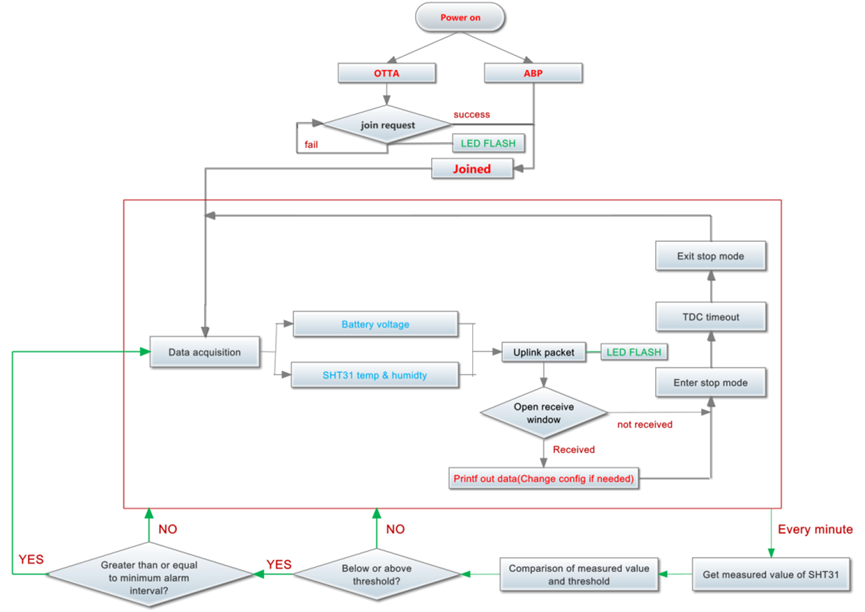
User can use AT+SHTEMP and AT+SHHUM command to set the alarm low limit or high limit. Device will check the temperature & Humidity every minute, if the temperature lower than low limit or greater than high limit. LSN50v2-S31 will send an Alarm packet base on Confirmed Uplink Mode to server.
Below is an example of the Alarm Packet.

2.5 Configure LSN50v2-S31
LSN50V2-S31 supports configuration via LoRaWAN downlink command or AT Commands.
- Downlink command instructions for different platform: Use Note for Server(IoT LoRaWAN Server)
- AT Command Access Instructions: LINK
There are two parts of commands: General one and Special for this model.
2.5.1 General Configure Commands
These commands are to configure:
- General system settings like: uplink interval.
- LoRaWAN protocol & radio related command.
These commands can be found on the wiki: End Device AT Commands and Downlink Commands
2.5.2 Sensor related commands
Set Temperature Alarm Threshold:
- AT Command:
AT+SHTEMP=min,max
- When min=0, and max≠0, Alarm higher than max
- When min≠0, and max=0, Alarm lower than min
- When min≠0 and max≠0, Alarm higher than max or lower than min
Example:
AT+SHTEMP=0,30 // Alarm when temperature higher than 30.
- Downlink Payload:
0x(0C 01 00 1E) //Set AT+SHTEMP=0,30
(note: 3rd byte= 0x00 for low limit(not set), 4th byte = 0x1E for high limit: 30)
Set Humidity Alarm Threshold:
- AT Command:
AT+SHHUM=min,max
- When min=0, and max≠0, Alarm higher than max
- When min≠0, and max=0, Alarm lower than min
- When min≠0 and max≠0, Alarm higher than max or lower than min
Example:
AT+SHHUM=70,0 // Alarm when humidity lower than 70%.
- Downlink Payload:
0x(0C 02 46 00) //Set AT+SHTHUM=70,0
(note: 3rd byte= 0x46 for low limit (70%), 4th byte = 0x00 for high limit (not set))
Set Alarm Interval:
The shortest time of two Alarm packet. (unit: min)
- AT Command:
AT+ATDC=30 // The shortest interval of two Alarm packets is 30 minutes, Means is there is an alarm packet uplink, there won't be another one in the next 30 minutes.
- Downlink Payload:
0x(0D 00 1E) ---> Set AT+ATDC=0x 00 1E = 30 minutes
Poll the Alarm settings:
Send a LoRaWAN downlink to ask device send Alarm settings.
- Downlink Payload:
0x0E 01
Example:
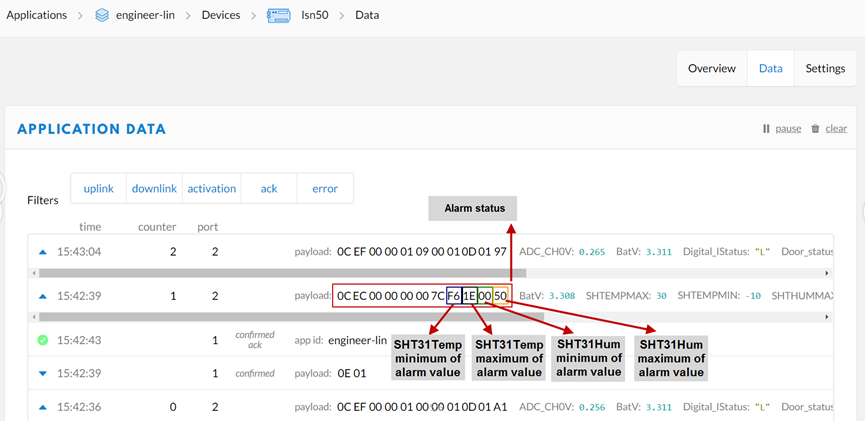
Explain:
- Alarm & MOD bit is 0x7C, 0x7C >> 2 = 0x31: Means this message is the Alarm settings message.
2.6 LED Status
LSN50-v2-S31 has an internal LED, it will active in below situation:
- LED will fast blink 5 times when boot, this means the temperature sensor is detected.
- After the fast blinks on boot, the LED will flash once which means device is trying to send Join Packet to the network.
- If device successful join LoRaWAN network, the LED will be solid on for 5 seconds.
2.7 Button Function
Internal RESET button:
Press this button will reboot the device. Device will process OTAA Join to network again.
2.8 Firmware Change Log
Firmware version and change log please see: See this link.
3. Battery Info
The LSN50v2-S31 battery is a combination of a 8500mAh ER26500 Li/SOCI2 Battery and a Super Capacitor. The battery is non-rechargeable battery type with a low discharge rate (<2% per year). This type of battery is commonly used in IoT devices such as water meter.
The battery is designed to last for more than 5 years for the LSN50v2-S31.
The battery related documents can be found as below:
The connector is as below incase user want to use their own battery
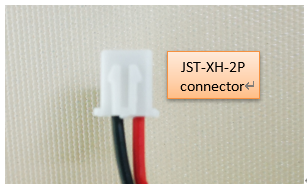
There are several parameters affect the battery power. Please see consumption report from here for the detail explain:
4. Use AT Command
4.1 Access AT Commands
User can use a USB to TTL adapter to connect to LSN50V2-S31 to use AT command to configure the device. Example is as below:

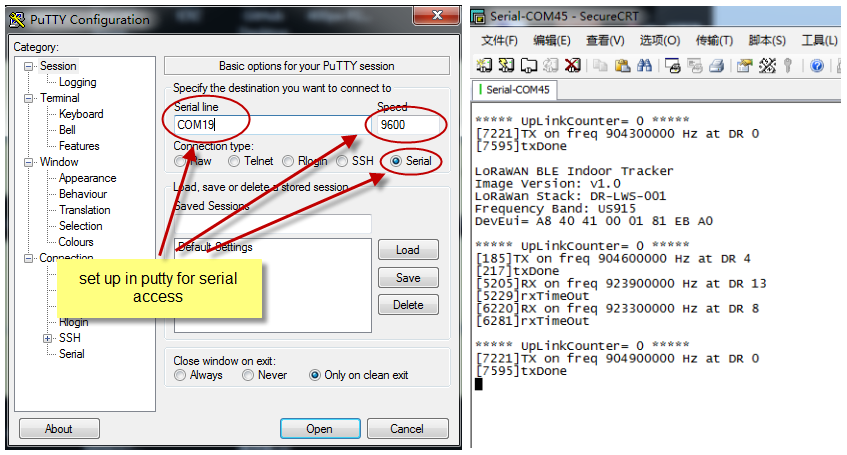
5. FAQ
5.1 What is the frequency range of LSN50v2-S31?
Different LSN50V2-S31 version supports different frequency range, below is the table for the working frequency and recommend bands for each model:

5.2 What is the Frequency Plan?
Please refer Dragino End Node Frequency Plan: End Device Frequency Band
5.3 How to update the firmware?
User can upgrade the firmware for:
Support new features
For bug fix
Change LoRaWAN bands.
Please see this link for how to upgrade: Firmware Upgrade Instruction
6. Trouble Shooting
6.1 AT Command input doesn't work
In the case if user can see the console output but can't type input to the device. Please check if you already include the ENTER while sending out the command. Some serial tool doesn't send ENTER while press the send key, user need to add ENTER in their string.
7. Order Info
Part Number: LSN50V2-S31-XXX Or LSN50V2-S31B-XXX
XXX: The default frequency band
- AS923 : LoRaWAN AS923 band
- AU915 : LoRaWAN AU915 band
- EU433 : LoRaWAN EU433 band
- EU868 : LoRaWAN EU868 band
- KR920 : LoRaWAN KR920 band
- US915 : LoRaWAN US915 band
- IN865 : LoRaWAN IN865 band
- CN470 : LoRaWAN CN470 band
8. Packing Info
Package Includes:
LSN50v2-S31 or LSN50v2-S31B LoRaWAN Temperature Sensor x 1
Dimension and weight:
- Device Size: cm
- Device Weight: g
- Package Size / pcs : cm
- Weight / pcs : g
9. Support
- Support is provided Monday to Friday, from 09:00 to 18:00 GMT+8. Due to different timezones we cannot offer live support. However, your questions will be answered as soon as possible in the before-mentioned schedule.
- Provide as much information as possible regarding your enquiry (product models, accurately describe your problem and steps to replicate it etc) and send a mail to support@dragino.com.
